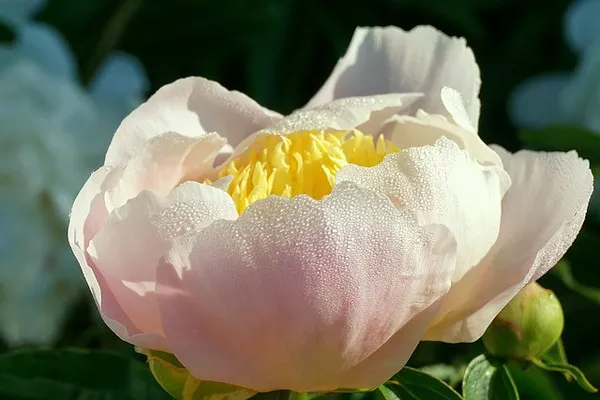Flowers, with their ephemeral beauty, have captivated humans for centuries. While a fresh bouquet can brighten up any room, there’s a timeless allure in preserving flowers through drying. Hanging dry flowers is a delicate and artful process that allows you to extend the life of your blooms and create stunning, everlasting arrangements. In this comprehensive guide, we will explore the various methods, best practices, and creative ideas to ensure successful flower drying.
Understanding the Basics
Before diving into the hanging process, it’s essential to grasp the basics of flower drying. Different flowers require distinct drying methods, and success often hinges on the right conditions. Here’s a breakdown of the key elements:
1. Flower Selection:
Choose flowers at their peak bloom but before they start to wilt. Ideal candidates for drying include roses, lavender, daisies, and baby’s breath. Select blooms with minimal blemishes and vibrant colors for the best results.
2. Timing is Crucial:
Harvest flowers early in the day after the dew has dried but before the sun is at its peak. This ensures the highest concentration of essential oils and moisture within the blooms.
3. Drying Conditions:
Maintain a dry and dark environment for the drying process. Humidity can hinder the drying process, so choose a well-ventilated space with good air circulation.
Methods of Hanging Dry Flowers
Now that you’ve gathered your blooms, it’s time to explore the different methods of hanging dry flowers. Each method offers unique benefits, and the choice depends on the type of flowers and your preferences.
1. Traditional Hanging Method:
This classic approach involves bundling flowers together and hanging them upside down in a cool, dark, and well-ventilated space. Here’s a step-by-step guide:
Bundling: Gather small bunches of flowers (around 5-10 stems) and secure them with a rubber band or twine, leaving a loop at the top for hanging.
Hanging: Suspend the bundles upside down from a hook or a hanger in a dark, dry area. Ensure that the flowers don’t touch each other to prevent mold growth.
2. Mesh Drying Racks:
Ideal for delicate blooms like daisies and chamomile, mesh drying racks provide excellent air circulation, promoting even drying. Follow these steps for this method:
Arrange: Place individual flowers or small bunches on the mesh racks, ensuring they don’t overlap.
Positioning: Set the racks in a cool, dark place with good airflow. This method is particularly effective for preserving the natural shape of the flowers.
3. Silica Gel Method:
Silica gel is a desiccant that absorbs moisture from flowers, making it a quick and efficient method. Here’s how to use silica gel for hanging dry flowers:
Preparation: Fill a container with silica gel, ensuring it’s deep enough to completely cover the flowers.
Burying: Gently bury the flowers in the silica gel, ensuring they are fully covered.
Waiting: Leave the flowers undisturbed for a week or until they are completely dry. This method is excellent for retaining the flowers’ vibrant colors.
Tips for Successful Flower Drying
While the methods outlined above are effective, incorporating some additional tips will enhance your success in hanging dry flowers:
1. Patience is a Virtue:
Rushing the drying process may compromise the quality of your flowers. Allow sufficient time for the blooms to dry thoroughly before handling or arranging them.
2. Choose the Right Location:
Opt for a dark, dry, and well-ventilated area for hanging your flowers. Avoid spaces with direct sunlight, as it can fade the colors of the blooms.
3. Monitor the Environment:
Regularly check the drying space for any signs of mold or mildew. If detected, remove the affected flowers immediately to prevent further contamination.
4. Experiment with Flower Varieties:
Don’t limit yourself to one type of flower. Experiment with different varieties and observe how each responds to the drying process. This allows for a diverse and visually appealing final arrangement.
Creative Ideas for Using Dry Flowers
Now that your flowers are beautifully dried, it’s time to unleash your creativity. Here are some innovative ideas for incorporating dry flowers into your home decor:
1. Framed Floral Art:
Arrange dried flowers in a shadow box or frame to create a stunning piece of wall art. This method preserves the three-dimensional quality of the blooms and adds a touch of nature to your home.
2. Potpourri Perfection:
Mix your dried flowers with complementary scents like essential oils, herbs, or spices to create personalized potpourri. Place the mixture in decorative bowls or sachets to infuse your living spaces with a delightful fragrance.
3. Everlasting Bouquets:
Combine different dried flowers to craft everlasting bouquets. Secure the stems with twine or ribbon and place them in vases for a timeless and elegant display.
4. DIY Floral Wreaths:
Fashion your own floral wreaths using dried flowers. Whether for your front door or as a centerpiece, these wreaths provide a charming and enduring accent to your living space.
Conclusion
Hanging dry flowers is a rewarding and timeless endeavor that allows you to savor the beauty of blooms long after they’ve left the garden. By understanding the basics, choosing the right drying method, and incorporating creative ideas, you can transform your favorite flowers into everlasting works of art. So, embrace the art of flower drying, and let nature’s beauty grace your home throughout the seasons.


